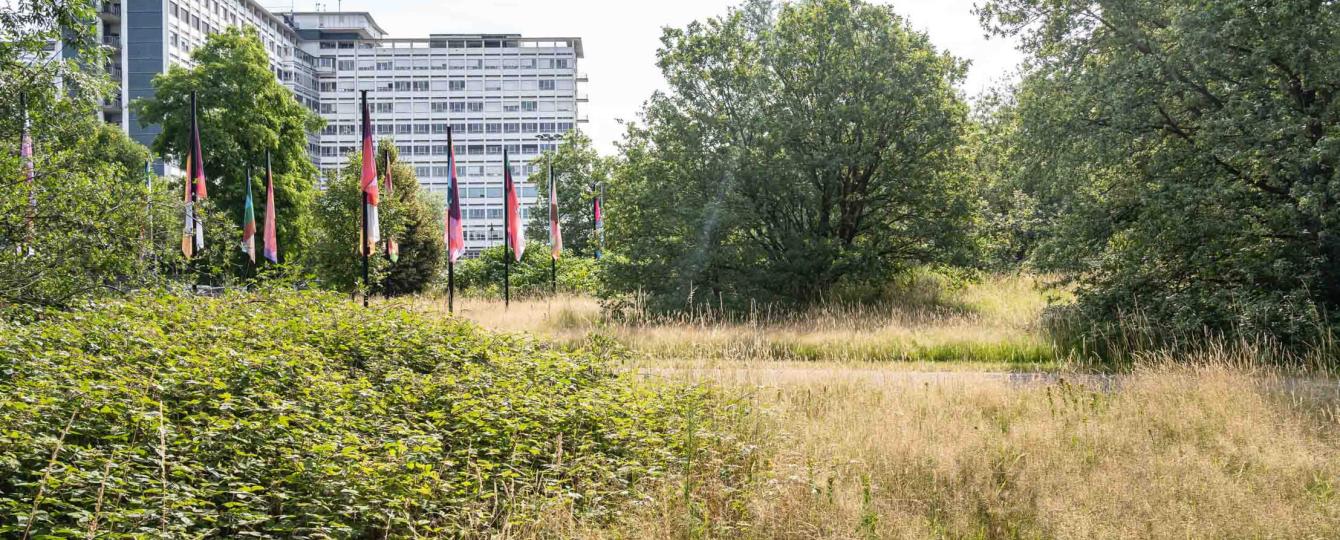Development of connection point
On the boundary between the museum and the hospital, we are creating an accessible connection point. There will also be a new entrance so that patients and neighbours can easily enter the art park. The tranquillity of the park and the inspiring art collection provide a safe ‘halfway-house’ between the seclusion of the healthcare facilities and the hustle and bustle of the city.
The creation of this area is the first concrete result of the cooperation with the ZAS University Child and Adolescent Psychiatry (ZAS UKJA) and UAntwerp. Together with these neighbours, the Middelheim Museum, as both museum and park, aims to further engage local communities. We also rely on other urban departments such as the Nature & Green Spaces Service for this purpose.
New access between hospital and museum
At the moment, the hospital and the museum are separated by a fence, a busy bike path, footpath, car park and (bus) lane. With Flemish grants, we are developing a better connection. This will eliminate the need for patients, their families and health care staff to make the detour along busy Lindendreef, and allow them to quickly and safely enter the museum. All other local residents, students and visitors will also be able to use this new access.
The contract for the design was awarded to Donker Design. To properly identify the needs of safe, accessible access, a preliminary ‘experimental gate’ will be installed. This will allow us to test how this passage can be used conveniently and safely.
First phase: focus on young patients
Art and nature promote well-being and mental health. At the Middelheim Museum, both elements come together. So we asked ourselves: how can we actively use these assets?
In an initial research phase, until the summer of 2024, the study will focus on the children and adolescents of ZAS University Child and Adolescent Psychiatry Antwerp at the Middelheim Hospital site. How can the museum support these mentally vulnerable young patients in their recovery? How does this fit within the therapeutic pathway and care provided by supervisors?
We are designing and co-creating the new connection point with the children and young people of ZAS UKJA. For each of the seven care units, ZAS UKJA organised a creative group session in October. The young patients will also remain closely involved in every step of the design's development until the end of 2025. This will help them develop their talents and could also help them find their place in society.
Cooperation with the neighbours
In addition to experts from ZAS' child and adolescent psychiatry department, two UAntwerp faculties are participating in the study. The design proposals will be developed by both health/science specialists and design scientists specialising in healing environments and urban planning.
Students are also actively participating: several working groups are considering space and service challenges in this zone. This project gives them insights into the needs and challenges of real users. The art park offers them an inspiring context to rethink the meaning of space in relation to well-being.



